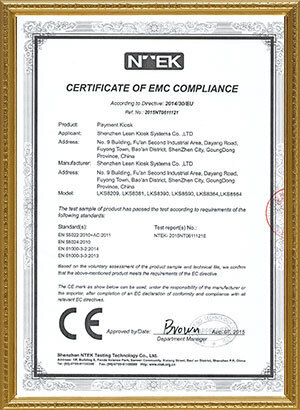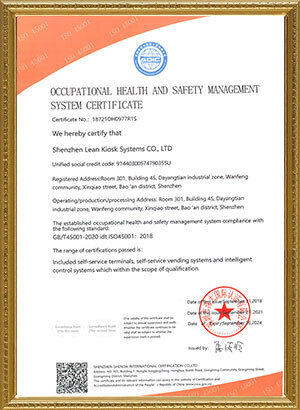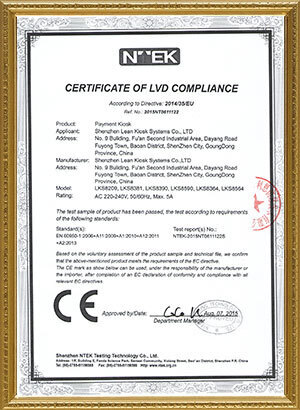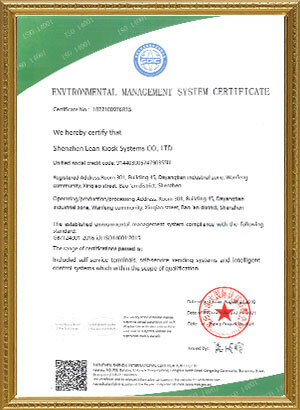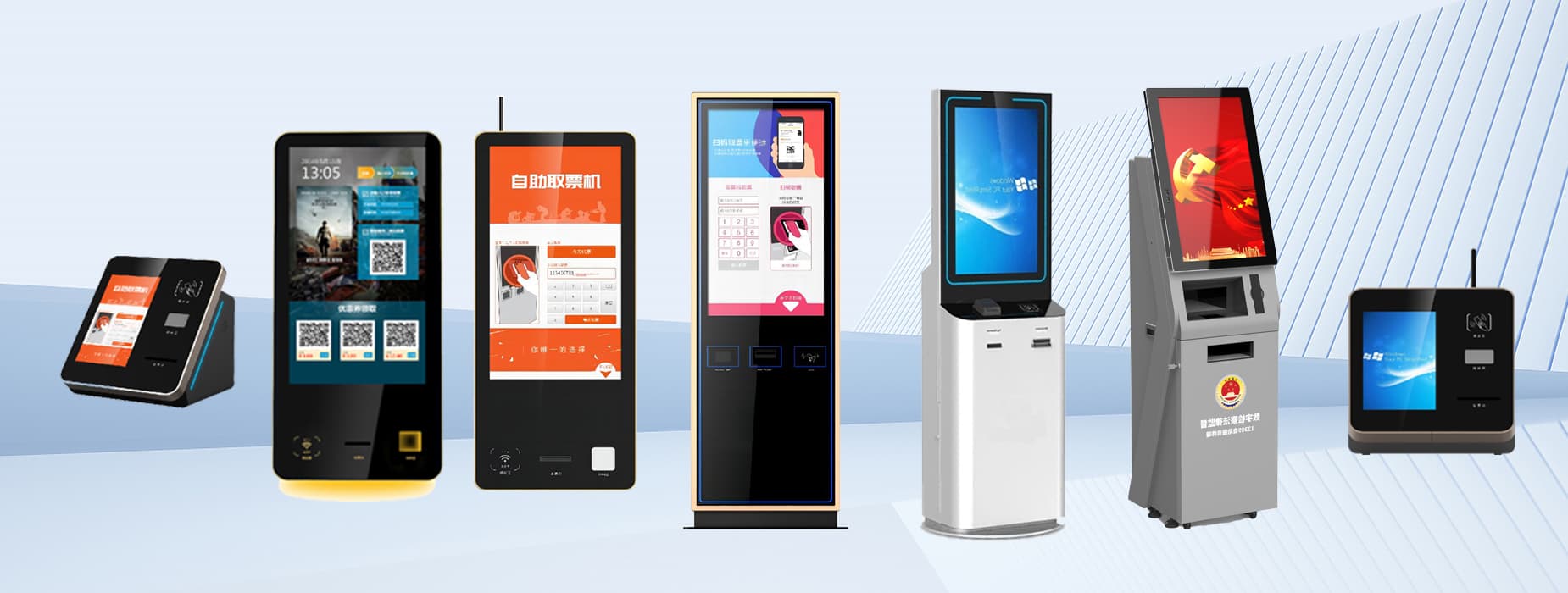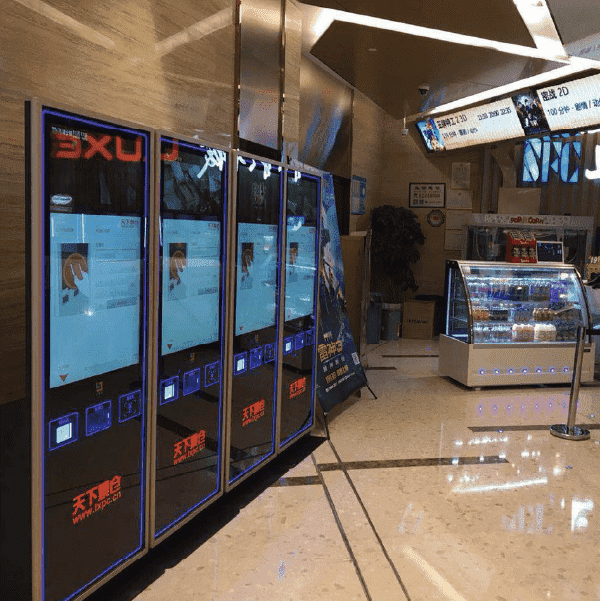





Movie Theater Kiosk In Cinema Reduce costs and increase efficiency
Movie Theater Kiosk Case Study: Enhancing Efficiency and Sales in Tokyo's Business District Cinema
Time: August 2022
Location: Tokyo, Japan - Business District Cinema
In August 2022, the Business District Cinema, located in Tokyo's bustling commercial hub, faced significant challenges in maintaining customer satisfaction due to lengthy ticket purchasing processes and long queues. To address these issues and streamline operations, the cinema embarked on a project to implement advanced movie theater kiosk. The goal was to enhance operational efficiency, boost ticket sales, and improve the overall customer experience.
Project Background
As one of the busiest cinemas in Tokyo, the Business District Cinema experienced high foot traffic, particularly during weekends and holidays. However, the traditional ticket counters were unable to cope with the surge in demand, leading to long wait times and customer frustration. The management recognized that the outdated manual ticketing system was a bottleneck that needed to be addressed to remain competitive in the rapidly evolving entertainment industry.
The decision to introduce movie theater kiosk was driven by the need to:
Increase Efficiency: Automate ticketing processes to reduce waiting times.
Enhance Customer Experience: Provide a faster and more convenient ticket purchasing method.
Boost Sales: Leverage technology to increase ticket sales and upsell additional services such as concessions.
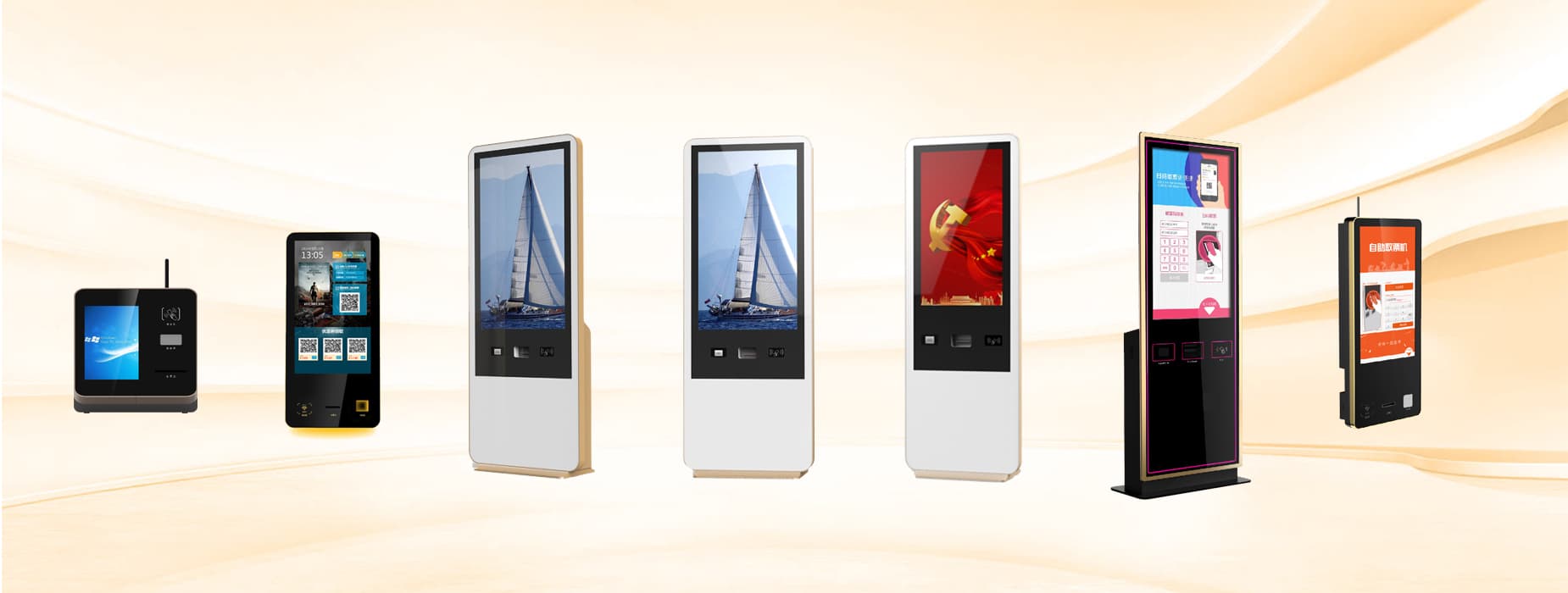
Solution: Implementing Movie Theater Kiosks
To achieve these objectives, the cinema partnered with Lean Kiosk Systems, a leading kiosk manufacturer with over a decade of experience in the industry. Lean Kiosk Systems was selected for its ability to deliver customized kiosk solutions tailored to the specific needs of the cinema.
The proposed solution included the installation of 20 state-of-the-art movie theater kiosks strategically placed throughout the cinema. These kiosks were designed to handle a variety of tasks, including ticket purchasing, seat selection, payment processing, and even loyalty program management. The kiosks were integrated with the cinema’s existing ticketing system to ensure seamless operations.
Efficiency Improvement Expectations
The primary expectation from the implementation of the kiosks was a significant improvement in operational efficiency. It was anticipated that the kiosks would reduce the average transaction time by 50%, allowing more customers to be served in less time. This reduction in transaction time was expected to alleviate long queues, particularly during peak hours, and contribute to a more pleasant customer experience.
Ticket Sales Growth Expectations
In addition to improving efficiency, the cinema management also expected a substantial increase in ticket sales. By offering a convenient and quick ticket purchasing option, the cinema aimed to increase its ticket sales by 20%. The movie theater kiosk was also designed to prompt customers with upsell options, such as purchasing snacks or drinks, further contributing to revenue growth.
Project Implementation Details
The implementation of the movie theater kiosks was carried out in several phases:
Planning and Design (2 months):
The project began with an in-depth analysis of the cinema's layout and customer flow. Lean Kiosk Systems worked closely with the cinema’s management to design kiosks that would not only meet functional requirements but also blend seamlessly with the cinema’s aesthetic.
During this phase, detailed blueprints were created, and the software was customized to integrate with the cinema’s existing ticketing system.
Installation and Testing (3 months):
Once the design was finalized, the kiosks were manufactured and installed on-site. The installation process was scheduled during off-peak hours to minimize disruption to the cinema’s operations.
After installation, the kiosks underwent rigorous testing to ensure that they were functioning correctly and could handle the expected volume of transactions. Any technical issues identified during testing were promptly addressed.
Staff Training (1 month):
The cinema staff received comprehensive training on how to operate and troubleshoot the kiosks. This training was essential to ensure that staff could assist customers effectively and keep the kiosks running smoothly.
Go-Live (1 month):
The final phase was the go-live, where the kiosks were fully operational and made available to customers. During the initial weeks, Lean Kiosk Systems provided on-site support to address any issues that arose and ensure a smooth transition to the new system.
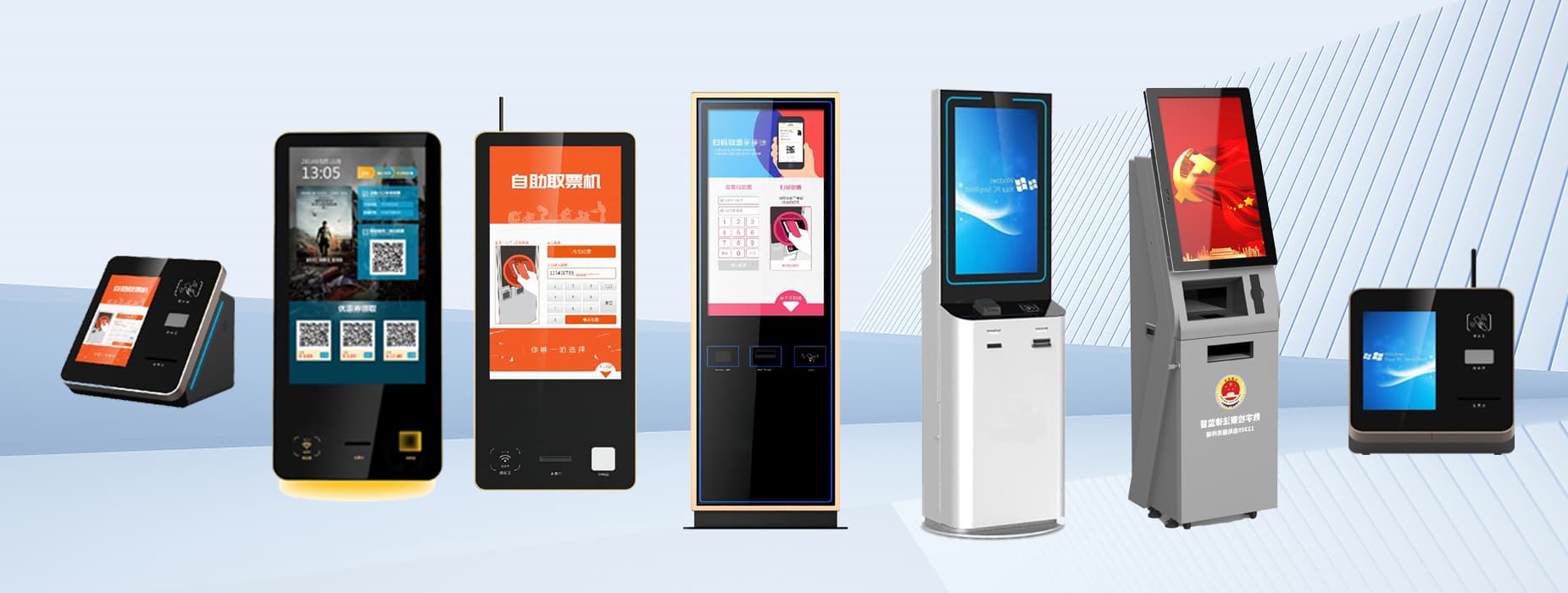
Challenges Encountered
Throughout the implementation process, several challenges were encountered, including:
Technical Integration: One of the biggest challenges was ensuring that the kiosks were fully compatible with the cinema’s existing ticketing system. This required extensive software customization and testing to prevent any technical glitches that could disrupt operations.
Space Constraints: The limited space within the cinema posed a challenge for the installation of the kiosks. To overcome this, the design team worked on optimizing the kiosk dimensions and placement to ensure they fit seamlessly without obstructing customer flow.
Staff Adaptation: While the staff training was comprehensive, there was initial resistance to adopting the new technology. Some staff members were concerned about the complexity of operating the kiosks. To address this, additional training sessions were provided, along with ongoing support.
Customer Satisfaction and Acceptance
Following the installation of the kiosks, the cinema management closely monitored customer feedback to gauge the system's acceptance. The response was overwhelmingly positive, with customers appreciating the convenience and speed of the kiosks. The cinema management also expressed high satisfaction with the project’s outcome, noting that the kiosks had exceeded their expectations in terms of performance and reliability.
Post-Implementation Operational Efficiency
After the kiosks were fully operational, the cinema experienced a significant increase in operational efficiency. Transaction times were reduced by an average of 40%, which was slightly better than the initial target. This improvement translated to shorter queues, even during peak hours, and a more streamlined customer experience. Additionally, the cinema reported a 30% increase in overall efficiency, as the kiosks allowed them to serve more customers in less time.
Ticket Sales Growth
In line with the project’s goals, the cinema saw a 25% increase in ticket sales within the first six months of kiosk implementation. The kiosks’ upsell features also contributed to a notable increase in concession sales, further boosting the cinema's revenue.
Case Study Summary
The implementation of movie theater kiosks at the Business District Cinema in Tokyo was a resounding success. The project not only met but exceeded its goals, delivering substantial improvements in both operational efficiency and ticket sales. Key takeaways from this case study include:
Thorough Planning: The success of the project can be attributed to the meticulous planning and design phases, which ensured that the kiosks were tailored to the cinema’s specific needs.
Customization: The ability to customize both the hardware and software of the kiosks was crucial in overcoming technical and spatial challenges.
Training and Support: Comprehensive staff training and ongoing support were essential in ensuring a smooth transition and maximizing the benefits of the kiosks.
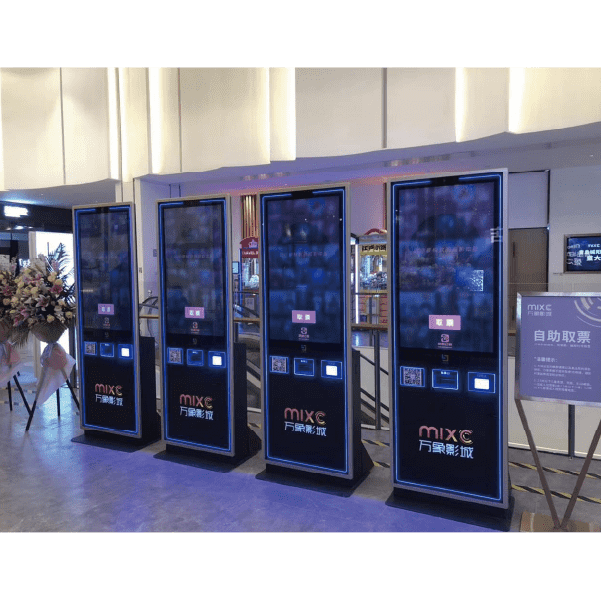
Lessons Learned and Recommendations
For industry peers and future projects, the following lessons and recommendations are offered:
Ensure Technical Compatibility: It is essential to select a kiosk solution that can be seamlessly integrated with existing systems to avoid technical issues.
Prioritize Staff Training: Adequate investment in staff training is critical for the successful adoption and operation of new technology.
Focus on Customization: Customization options for both hardware and software are vital to address specific operational challenges and optimize performance.
Provide Ongoing Support: Strong after-sales support is key to ensuring the long-term success and reliability of kiosk systems.
Monitor Customer Feedback: Regularly gathering and analyzing customer feedback can help identify areas for improvement and ensure that the system continues to meet customer needs.
Future Plans
Looking ahead, the Business District Cinema plans to further leverage the benefits of the kiosks by:
Maintenance and Innovation: Implementing regular maintenance schedules and exploring new features and technologies to enhance the user experience.
Expansion and Efficiency: Expanding the use of kiosks to other locations and exploring cost-effective strategies to further improve operational efficiency.
Extending Service Life: Implementing preventive maintenance strategies to extend the lifespan of the kiosks and reduce the frequency of repairs.
Optimizing Fault Handling: Developing a more efficient fault-handling process to minimize downtime and maintain high levels of customer service.
Project Director’s Insights
As a project director overseeing the implementation of the movie theater kiosks, I believe this case study offers valuable insights for both industry peers and clients. The success of this project underscores the importance of careful planning, customization, and support in achieving significant improvements in efficiency and customer satisfaction. By learning from this experience, other cinemas and kiosk manufacturers can replicate this success and continue to innovate in the rapidly evolving entertainment industry.
Theater kiosks,
movie kiosk
Address: No. 99-15, Fuan intelligent manufacturing Industrial Park, Dayang Road, Fuhai Street, Baoan District, Shenzhen, China
- Tel:+852 59566712
- Email: frank@lien.cn
- Worktime:8:00-02:00
- Contact Person:Frank
- Mobile Site



